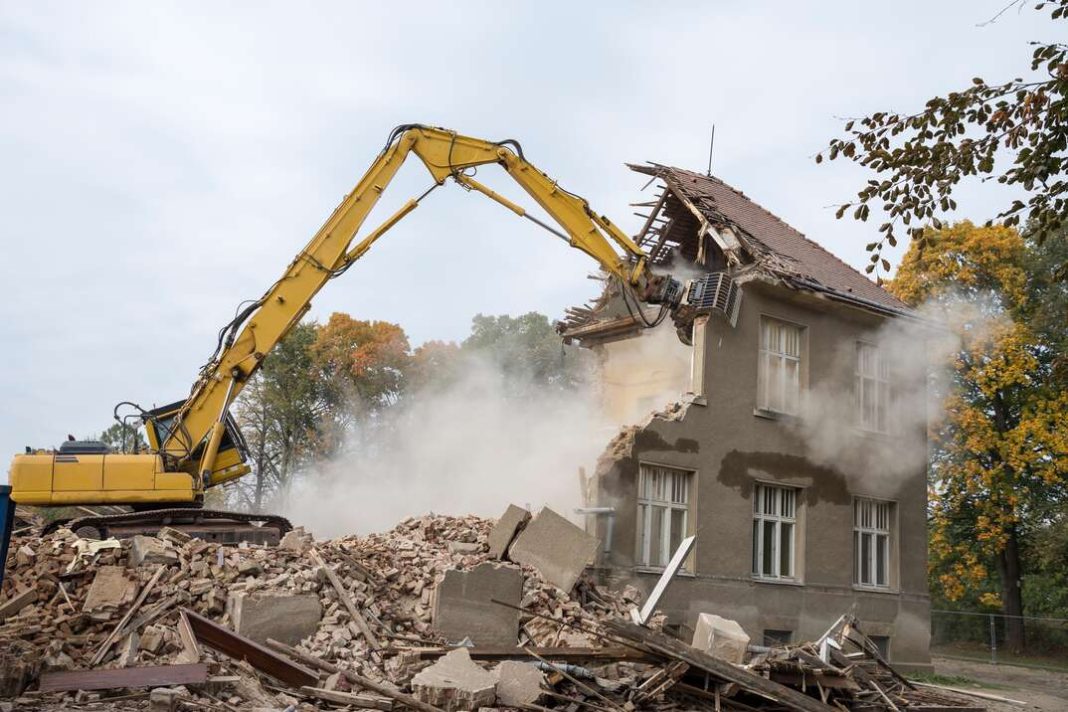Building demolition is a critical phase in urban development and redevelopment projects.
As the construction industry expands, the demand for demolition services is anticipated to rise. But effective demolition is neccessary.
The demolition process involves dismantling, destroying, or knocking down building structures along with the materials used in the construction of the property.
A building is demolished for various reasons such as; Structures may reach the end of their functional lifespan, necessitating demolition, buildings that have suffered significant damage or degradation may no longer be safe, portions of a building might need to be dismantled to upgrade or enhance its quality and value and property owners may wish to clear land for new developments or sales.
Failing to demolish a building when necessary can pose serious risks, endangering not only the occupants but also others in the surrounding area. Structural weaknesses can lead to unexpected collapses or other hazardous situations.
Demolishing a structure requires a blend of engineering expertise, strategic planning, and adherence to safety and environmental standards.
By carefully selecting the appropriate demolition method and ensuring thorough planning and execution, the process can be carried out efficiently and safely.
Effective demolition process
Initial Assessment
A comprehensive initial assessment is indeed crucial before commencing any demolition project. It sets the stage for safe and efficient execution while mitigating potential risks to the surrounding environment and community.
Identifying hazards such as nearby buildings, utility lines, and environmental concerns is essential for planning and executing the demolition safely.
Assessing the construction materials, design, previous building usage, and adherence to building codes provides insight into the structure’s complexity and potential challenges during demolition.
Understanding the neighborhood’s tolerance to noise and dust, as well as other community impacts, ensures that appropriate measures are taken to minimize disruptions.
Moreover, checking for hazardous materials like asbestos, lead, or other toxic substances is paramount for worker safety and environmental protection.
Evaluating the structural integrity, construction method, and design of the building helps determine the most suitable demolition methods and equipment required.
Permits and Regulations
Most demolition projects require a permit from local authorities. This is crucial not only to ensure the safety of the project but also to avoid potential legal consequences.
Investigate the specific regulations and permit requirements in your area, which can vary by state, city, or even neighborhood.
This can vary from environmental permits needed, especially if the demolition involves handling hazardous materials, to noise and dust regulations to minimize disruptions to the surrounding area.
Consider partnering with regulatory experts or consultants to navigate the permit process efficiently and avoid potential setbacks. If hiring a contractor, ensure they are informed about local regulations and are responsible for obtaining necessary permits.
Depending on the location, acquire either a DA or CDC approval for demolition, following the specific requirements set by the local council. Upon receipt of approvals distribute letters to neighboring properties at least seven days before demolition begins, informing them of the upcoming work.
Site Preparation
After permitting, careful preparation will keep the demolition running smoothly throughout the process. A detailed plan on how the demolition is best executed should be developed.
Specify the techniques for different parts of the building (e.g., manual demolition for delicate areas, mechanical demolition for robust structures, and implosion for large buildings). Describe the step-by-step sequence in which the demolition will be carried out to ensure structural stability and safety.
Include details about the building’s location, its distance from neighboring structures, roads, and vulnerable zones like schools and hospitals. Outline measures for managing health and safety, and plans for waste disposal before, during, and after demolition.
Conduct safety training for all personnel involved and ensure that everyone is equipped with the necessary personal protective equipment (PPE).
Clear the site of any debris, hazardous materials, or obstacles that may impede the demolition process. Establish safety perimeters and secure the site to prevent unauthorized access.
Monitoring and Inspection
Continuously monitor the demolition process to identify any safety hazards or structural instability. Conduct regular inspections to ensure compliance with safety protocols and address any issues promptly.
Post-Demolition Inspection
Once demolition is complete, thoroughly clean the site and restore it to a safe condition. This may include grading the land, planting vegetation, or installing erosion control measures to prevent soil erosion.
Collect and verify documentation of waste disposal, including receipts and records from landfills and recycling facilities. Ensure all hazardous waste manifests are complete and filed appropriately.
Conduct a walkthrough of the site with the project manager and relevant team members after. Discuss and address any remaining concerns or observations noted during the inspection.
Arrange a final site visit with the client or stakeholders to review the completed demolition. Obtain written confirmation of their satisfaction with the work and the current condition of the site.
Document the final sign-off from all relevant parties, confirming that the demolition project is complete and ensure all project documentation is archived for future reference.
Also Read
How to prevent injuries in scaffolds
Steel buildings and its advantages in Africa

